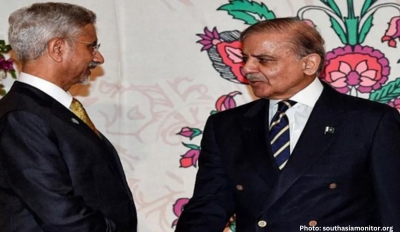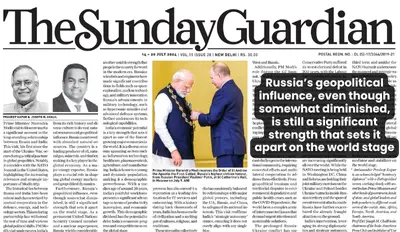Washington, DC: February 14, 2016: With the sudden death of conservative U.S. Supreme Court Justice Antonin Scalia, all eyes are on Sri Srinivasan, 48, who has served on the U.S. Court of Appeals for the District of Columbia Circuit since May 2013. If chosen by President Obama, Srinivasan would be the first Indian-American on the court and has impeccable bipartisan credentials. The Senate confirmed him on a 97-0 vote three years ago. He was a law clerk to Supreme Court Justice Sandra Day O’Connor, now retired, a 1981 appointee of Republican President Ronald Reagan. At Srinivasan’s confirmation hearing, Texas Republican Senator Ted Cruz, now a presidential candidate, described himself as a long-standing friend dating back to their time together as law clerks in the U.S. appeals court based in Richmond, Virginia. So far on the appeals court, his rulings have not sparked controversy.
“He was an extraordinary individual and jurist, admired and treasured by his colleagues,” Chief Justice John Roberts said in a statement. “His passing is a great loss to the court and the country he so loyally served.” Born in 1936 in Trenton, New Jersey, Justice Scalia was the first Italian American to serve on the high court.
He was one of the most prominent proponents of “originalism” – a conservative legal philosophy that believes the US Constitution has a fixed meaning and does not change with the times. In 2008, Justice Scalia delivered the opinion in District of Columbia v Heller, a landmark case that affirmed an individual’s right to possess a handgun.
Throughout his career, the outspoken justice has been a vocal opponent of abortion and gay rights, often writing scathing dissenting opinions. He supported business interests and was a strong advocate for the death penalty, but he often parted with his conservative colleagues on issues of free speech.
Justice Scalia’s death could shift the balance of power on the US high court, allowing President Barack Obama to add a fifth liberal justice to the bench. The court’s conservative 5-4 majority has recently stalled major efforts by the Obama administration on climate change and immigration.
Justice Scalia, 79, was appointed by President Ronald Reagan in 1986. He died in his sleep early on Saturday while in West Texas for hunting trip, the US Marshals Service said. “For almost 30 years, Justice Scalia was a larger-than-life presence on the bench,” President Obama said, calling him “an extraordinary judicial thinker” with “an incisive wit”.
The president said he intends to name a replacement in due time, despite calls from Republicans to wait until the next president is elected. “There will be plenty of time for me to do so and for the Senate to fulfil its responsibility to give that person a fair hearing and a timely vote,” Obama said.
The sudden departure of Justice Scalia has set up a major political showdown between President Barack Obama and the Republican-controlled Senate over who will replace him just months before a presidential election. It has been nearly 50 years since political wrangling between a president and Senate pushed a Supreme Court nomination into the next administration.
Republicans in the US Senate are expected to do everything they can to prevent Barack Obama, who has fewer than 11 months left in his presidency, from naming a successor to a court that had been sharply divided between liberals and conservatives. If they succeed, a Democratic victory in November would mean a court with a decidedly more liberal bent. If Republicans prevail they preserve their slender conservative majority on a court that regularly issues landmark decisions on issues like gay rights, immigration law, healthcare reform, campaign finance reform and civil liberties.
It is difficult to overestimate the impact that the death of Supreme Court Justice Antonin Scalia will have on US politics in the coming months. A vacancy on the court that serves as the final arbiter on legal and political controversies of all stripes, is always a significant, and significantly contentious, event.
The appointment of Justice Scalia’s successor is certain to become a major issue in the presidential race, with stark divisions emerging over whether he or she should be nominated by this president or the next. Senate Majority Leader Mitch McConnell, a Kentucky Republican, said on Saturday that the new justice should be selected after the presidential election. “The American people should have a voice in the selection of their next Supreme Court Justice,” he said. His stance was echoed by Republican presidential candidates including senators Ted Cruz and Marco Rubio.
Senator Harry Reid, the top Democrat in the chamber, called the move to delay the confirmation “unprecedented”. “The Republicans in the Senate and on the campaign trail who are calling for Justice Scalia’s seat to remain vacant dishonor our constitution,” Democratic presidential candidate Hillary Clinton said. “The Senate has a constitutional responsibility here that it cannot abdicate for partisan political reasons.”
Appointed by Democratic presidents, associate justices Mrs Ginsburg, 82, Sonia Sotomayor, 61, Stephen Breyer, 77, and Elena Kagan, 55, make up the court’s liberal wing. Appointed by Republican presidents, Chief Justice John Roberts, 61, along with justices Clarence Thomas, 67, Anthony Kennedy, 79, and Samuel Alito, 65, are the court’s conservative bloc. With a Supreme Court closely divided between five conservative justices and four liberal ones, every person on the bench is critical. Many of the most groundbreaking Supreme Court decisions of recent times have been decided by the slimmest of majorities.
Other Justices, who are said to be in consideration for the Supreme Court Bench are: Jane Kelly of Eighth Circuit and Paul Watford of the Ninth Circuit. California Attorney General Kamala Harris is another name that has been floated as a possible Supreme Court nominee, although she’s currently campaigning to replace Barbara Boxer in the US Senate. All are young – which is key when seeking Supreme Court longevity – and popular among liberals, while not having a controversial judicial track record that could be picked apart by conservatives.
Supreme Court justices don’t need to have an extensive background in the judicial branch, however. Normally, if a vacancy opens up on the court, the president will name a successor after a few weeks of consideration. At that point, the US Senate Judiciary Committee will hold hearings in which the nominee is extensively questioned. Then the entire Senate votes on whether to approve the nominee. Although a simple majority of the 100-member Senate is necessary for confirmation, senators could “filibuster” the pick – a procedural manoeuvre that effectively raises the bar for approval to a three-fifths majority.
Republicans in the Senate are going to be under intense pressure from some conservatives to do everything they can to delay confirmation of a replacement until a new chief executive is sworn in on 20 January 2017. That could involve slowing down confirmation hearings in the Senate committee and filibustering any nominee before they receive a vote in the full Senate.
Justice Srinivasan has been considered as a Supreme Court Judge in Waiting. During his prior hearing before the Senate for his current job, it was reported that Justice Sri Srinivasan’s “credentials would surely appeal to Obama, who has a fondness for technocrats, and his thin paper trail would make him difficult to attack. Which is why it looks very much like this hearing isn’t just a test for Srinivasan—it’s a dress rehearsal.” Now that he had won the nomination with unanimity in the US Senate, all eye are once again on this young judge with impeccable record.






